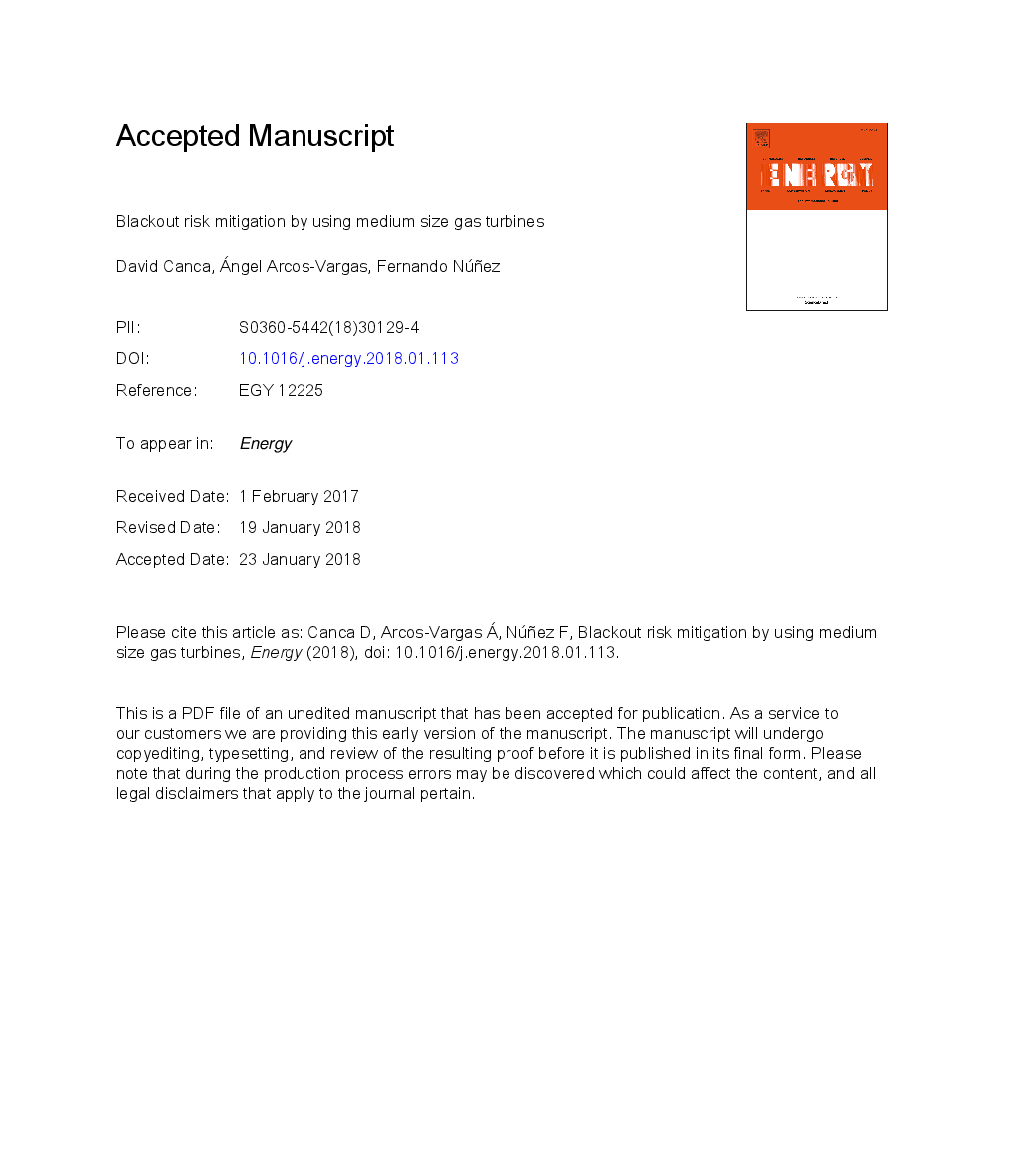ترجمه فارسی عنوان مقاله
کاهش خطر کم شدن میزان با استفاده از توربین های گاز متوسط
عنوان انگلیسی
Blackout risk mitigation by using medium size gas turbines
| کد مقاله | سال انتشار | تعداد صفحات مقاله انگلیسی |
|---|---|---|
| 92427 | 2018 | 29 صفحه PDF |
منبع

Publisher : Elsevier - Science Direct (الزویر - ساینس دایرکت)
Journal : Energy, Volume 148, 1 April 2018, Pages 32-48
ترجمه کلمات کلیدی
شبکه توزیع، قدرت در معرض خطر، نسل توزیع شده، بازار برق و گاز، برنامه ریزی خطی زنجیره ای مختلط،
کلمات کلیدی انگلیسی
Distribution network; Power at risk; Distributed generation; Electricity and gas market; Mixed integer linear programming;
ترجمه چکیده
هدف از این مقاله بررسی جنبه های اقتصادی قدرت شبکه در کاهش خطر با استفاده از تولید توزیع شده توربین گاز است. دو مدل مختلف بهینه سازی برنامه ریزی چند بعدی با هدف انتخاب هر دو، مناسب ترین مدل های توربین و سال نصب را پیشنهاد می کنند. مدل اول، وجود یک توافقنامه شبکه جهانی بین شرکت های تولیدی و توزیع کننده را در نظر می گیرد تا حداقل تا حدی تمام نقاط خطر را پوشش دهد. در مرحله دوم ژنراتورهای توزیع شده به طور کامل آزاد می شوند تا از میان مکان های پیشنهاد شده توسط توزیع کننده انتخاب شوند. از آنجاییکه توزیع برق یک فعالیت نظارتی است و منابع عمومی را مدیریت می کند، یکی از تصمیماتی که باید اتخاذ شود این است که چقدر مولدین باید از لحاظ اقتصادی تشویق شوند تا قدرت نسل مناسب را در نقاط خطرناک نصب کنند. برای این منظور، یک بازپرداخت ممکن است تنظیم شده است که جریمه برق را در موارد خاص جبران کند. رویکرد پیشنهادی با استفاده از هر دو مدل در یک سناریوی بزرگ در مورد تقریبا نیمی از شبکه توزیع اسپانیایی نشان داده شده است. تجزیه و تحلیل حساسیت با در نظر گرفتن مقادیر مختلف پاداش و قیمت گاز انجام می شود. تجزیه و تحلیل نشان می دهد اهمیت قیمت گاز به منظور اعمال مکانیزم تولید توزیع شده است.

